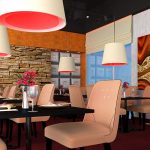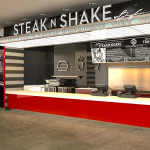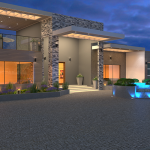The Role of Wayfinding Design in Residential Communities: Improving Navigation and Aesthetics
Introduction to Wayfinding Design in Residential Communities
Wayfinding design in residential communities is about making it easy for people to find their way around. It’s not just about putting up signs. Good wayfinding design combines signs, maps, symbols, and even architecture to create a system that helps everyone understand where they are and how to get to where they want to go. It’s important because it can make neighborhoods feel more welcoming and less confusing. Plus, it adds to the beauty of the area. When a community has clear, smartly designed wayfinding elements, residents and visitors alike have a better experience. They can move around more freely, feel safer, and enjoy the surroundings more. Think of it as the difference between wandering in a maze and walking through a well-organized park. That’s what good wayfinding design aims to achieve in residential communities.
The Impact of Wayfinding Design on Navigation
Wayfinding design isn’t just for businesses or cities. It plays a big role in residential communities too. Think of it as the map you don’t have to carry around. Good wayfinding helps everyone – residents and visitors alike – find their way without confusion. Imagine walking into a community and easily finding the clubhouse, pool, or your friend’s house without having to ask for directions or wander aimlessly. That’s the power of effective wayfinding design. It uses signs, colors, lighting, and architecture to guide you where you need to go. Not only does this reduce frustration, but it also saves time. People feel more at ease and confident navigating a space that makes sense to them. When a community invests in good wayfinding, it’s saying, “We care about your experience here.” This isn’t about fancy decor or expensive signs. It’s about clear, simple solutions that make getting from point A to B intuitive. So, whether you’re on foot, bike, or behind the wheel, the right wayfinding design makes all the difference in how smoothly you move through a space.
Enhancing Aesthetics through Wayfinding Elements
Wayfinding elements do more than guide people from point A to B in residential communities; they also play a crucial role in enhancing the area’s aesthetics. Imagine you’re walking through a neighborhood, and you see signs with elegant fonts, colorful maps at intersections, and unique sculptures marking key locations. These aren’t just functional; they add beauty and character to the space. Wayfinding design combines art with utility, using materials and styles that fit the community’s vibe. For instance, if a community has a historical theme, the wayfinding elements might include old-fashioned signposts and vintage-style maps. It’s about creating an atmosphere that feels welcoming and intriguing. By carefully choosing designs that reflect the community’s identity, planners can transform ordinary navigational aids into works of art that boost the overall look and feel of the area.
Key Components of Effective Wayfinding Design
Wayfinding in residential communities isn’t just about putting up signs. It’s an art that blends functionality with aesthetics, making sure residents and visitors can navigate effortlessly while also enhancing the area’s look. Let’s break down the key components that make wayfinding design effective. First, signs should be clear and easy to read. This means using fonts that stand out and are big enough to be seen from a distance, and including symbols that are universally recognized. Second, it’s about consistency. All signs in the community should follow a similar design theme, creating a cohesive look that ties the neighborhood together. Third, strategic placement is crucial. Signs should be placed at key decision points, like entrances, intersections, and parking areas, guiding people where they need to go without overwhelming them with too much information at once. Lastly, lighting plays a big role. Signs need to be well-lit, ensuring they are visible at night or during bad weather. By focusing on these components, wayfinding design can make residential areas not just easier to navigate, but more welcoming and attractive too.
Integrating Wayfinding Design with Community Branding
Wayfinding design isn’t just about putting up signs to tell you where to go. It’s about creating a sense that the community you live in or are visiting feels like home. When done right, wayfinding design matches the branding of the community. This means using the same colors, fonts, and styles seen around the neighborhood in the signs. So, if your community logo is green and blue with a modern font, your wayfinding signs should match that. This helps make everything look connected and gives a strong sense of place. It’s not just about being practical; it’s about making the space welcoming and easy to understand. This approach helps people feel proud of where they live and makes visitors want to come back. Remember, the goal is to make finding your way around as seamless as possible while enhancing the community’s visual appeal.
The Role of Signage in Wayfinding Solutions
Signage plays a crucial role in wayfinding solutions, especially in residential communities. Imagine wandering into a new estate and being greeted by clear, visible signs that guide you effortlessly to your destination. That’s the power of effective signage. It helps residents and visitors navigate through spaces, enhancing safety and reducing confusion. Good signage is more than just direction. It includes maps, symbols, and color codes that make navigation intuitive. Think of it as a silent guide that leads you where you need to go without asking for directions. For residential communities, this is vital. Well-designed signage contributes to a sense of belonging and community identity. It’s not just about function; aesthetics matter too. Attractive signs that match the community’s vibe can boost pride among residents. Plus, in emergencies, clear signage can literally save lives by guiding everyone to safety swiftly. So, when planning a residential area, remember, signage is key. It’s a blend of art and utility that makes life easier and communities more connected.
Digital vs. Physical Wayfinding Tools: Pros and Cons
When navigating through residential communities, people use either digital or physical wayfinding tools. Each has its upsides and downsides. Digital tools, like apps and GPS, are convenient because they’re always updating and can easily adapt to new developments. They’re super helpful because you can access them from anywhere, as long as you have your phone or another device. However, they need internet access to work best and can be less reliable in areas with poor connectivity. Also, not everyone finds them easy to use, especially those not tech-savvy.
On the flip side, physical tools such as signs, maps, and landmarks have their charm. They’re always there, rain or shine, don’t need a battery or signal, and have a traditional feel that many people appreciate. Plus, they can enhance the look of a place, adding to its character. But, they don’t update automatically. If a new building pops up or a road changes, physical signs can quickly become outdated. And, if they’re not placed well or get damaged, they can be more confusing than helpful.
Both digital and physical wayfinding tools play important roles in helping everyone get around residential communities. The best approach? Combining them. Use digital for the latest updates and convenience, and physical for reliability and aesthetics. That way, you cater to everyone’s needs and preferences, making navigation a breeze and keeping your community looking good.
Strategies for Implementing Wayfinding Design
To make navigation easier and enhance the look of residential communities, it’s key to apply smart wayfinding design. Here’s how. First, use clear, easy-to-read signs at all entrances and exits. These should be visible both day and night. Second, incorporate landmarks. Unique structures or artwork can serve as natural guides. Third, think about color coding different areas. This helps residents and visitors quickly understand where they are. Also, lighting is crucial; it not only ensures safety but also guides people during the night. Lastly, keep paths and walkwaysvisible and free from obstructions. This straightforward approach not only helps people get around but also adds an inviting appeal to the community.
Case Studies: Successful Wayfinding Design in Residential Areas
Several communities around the world have transformed their navigation and aesthetics through effective wayfinding design. Let’s take a look at a few examples. First, consider the Canary Wharf in London. This financial district turned residential hub uses integrated digital and physical signage to simplify navigation. The designers focused on clear, easy-to-understand icons and a cohesive color scheme that blends with the environment yet stands out enough to catch the eye. The result? A seamless blend of functionality and beauty, making it easier for residents and visitors to find their way. Next, the Pearl District in Portland, Oregon, showcases the power of community input in wayfinding design. The neighborhood features unique, artistically designed signs that reflect its history and character. These signs not only guide but also tell stories, deeply connecting with those who walk its streets. Through collaborating with local artists and historians, the Pearl District has created a sense of place and belonging. Finally, we have the community of Celebration, Florida, designed with a nod to nostalgic American towns but with a modern twist in its wayfinding. Celebration uses traditional signage complemented by a smart app that provides real-time updates and navigation help. This dual approach caters to all ages and technologic preferences, ensuring everyone finds their way comfortably. These cases show that thoughtful wayfinding design not only improves navigation but can also enhance the beauty and sense of community in residential areas.
Conclusion: The Future of Wayfinding Design in Community Planning
As our cities grow and evolve, the importance of smart wayfinding design in residential communities becomes clear. It’s more than just putting up signs; it’s about creating intuitive environments that guide, inform, and enhance the user experience. The future of wayfinding in community planning is heading towards a more integrated and technology-driven approach. Expect to see digital solutions, such as apps and augmented reality, blend with the physical landscape, making navigation not just easier, but part of the community’s character. Sustainable materials and designs that reflect local culture and history are also becoming a priority, marrying functionality with aesthetics. This evolution in wayfinding design isn’t just about getting from point A to point B; it’s about crafting journeys that connect people to their environment in meaningful ways. As we move forward, the role of wayfinding will only grow in importance, shaping more livable, engaging, and navigable communities for everyone.












